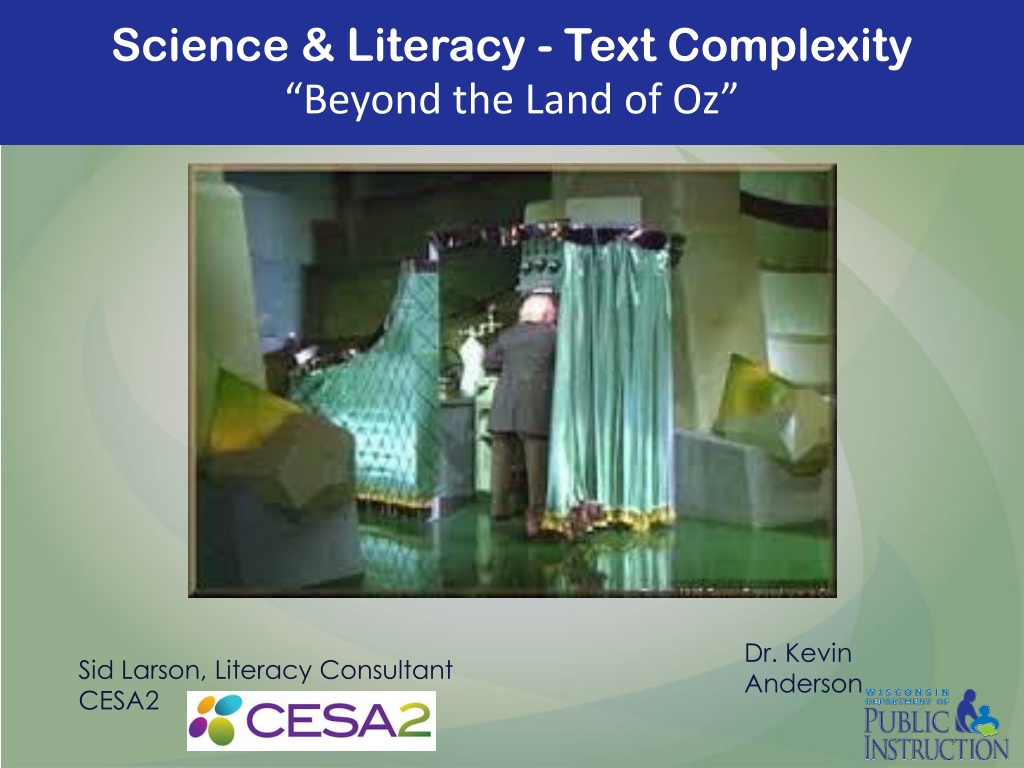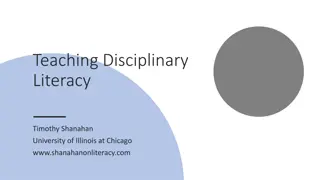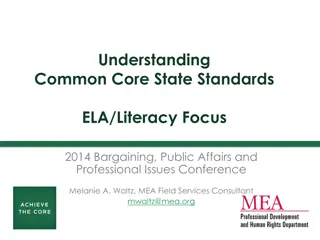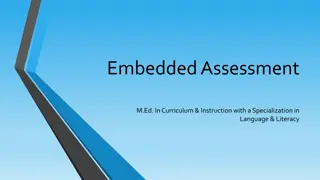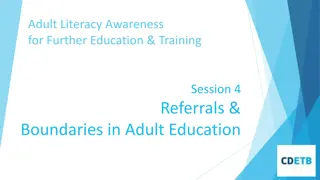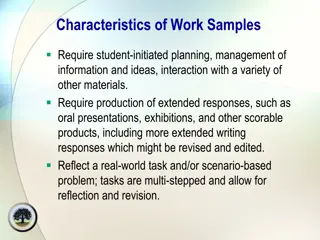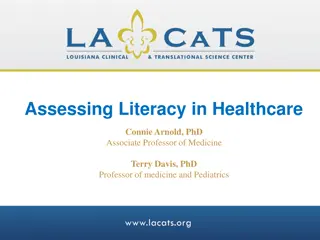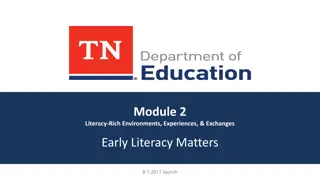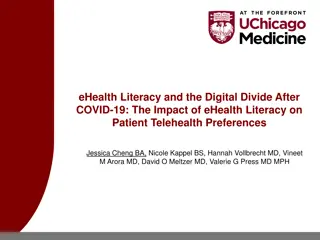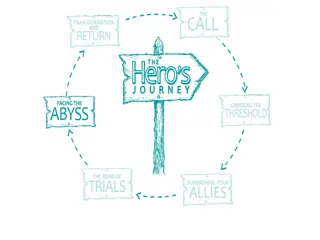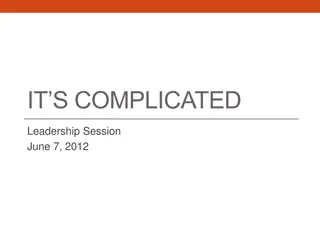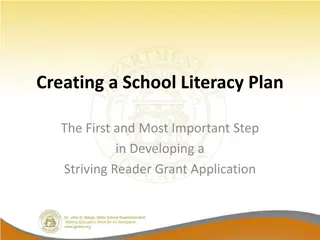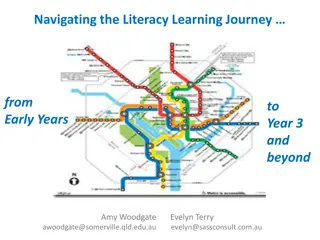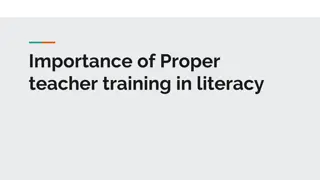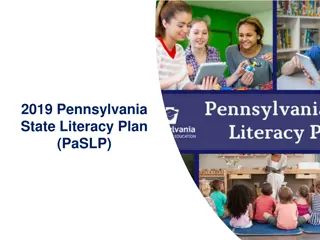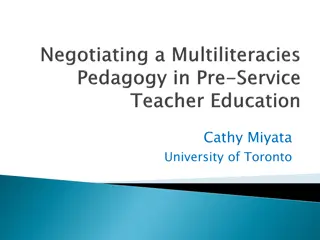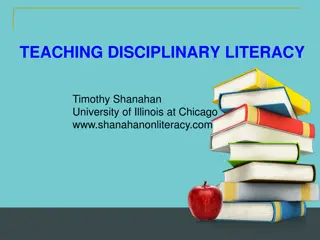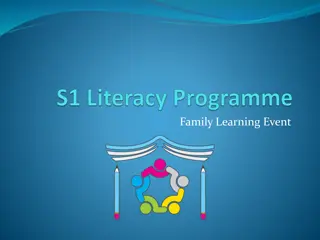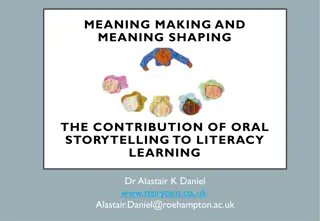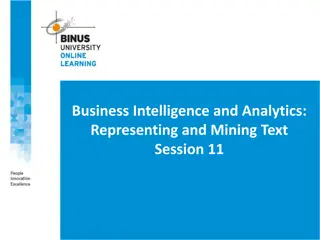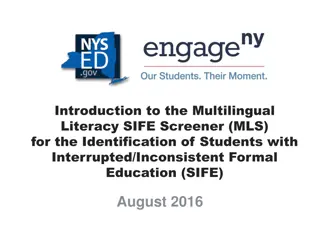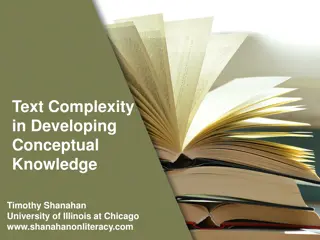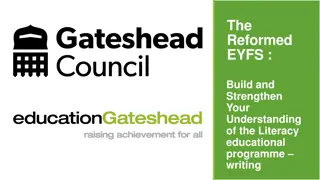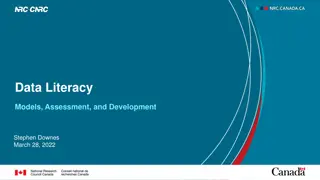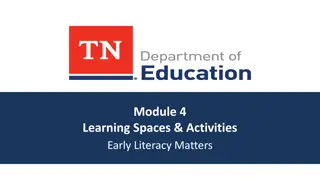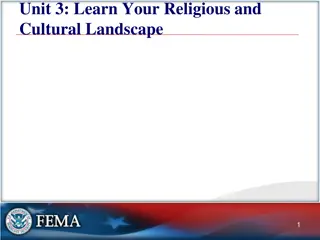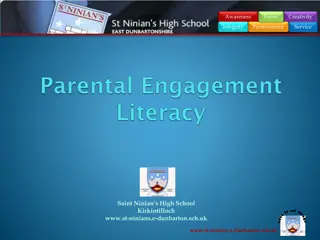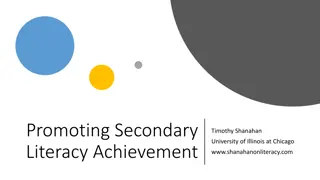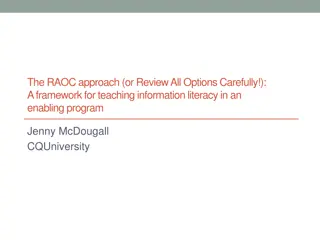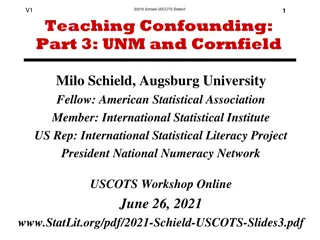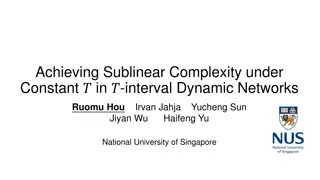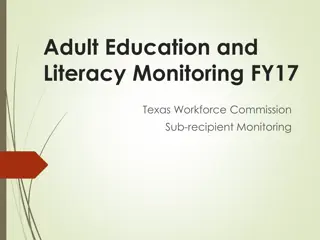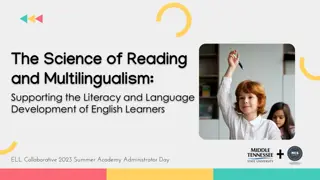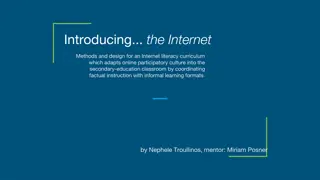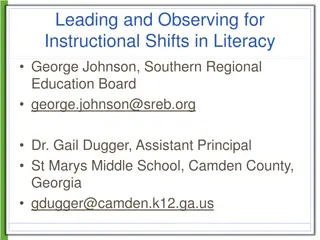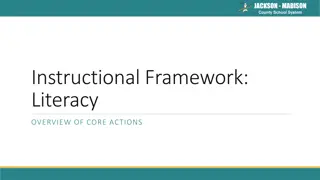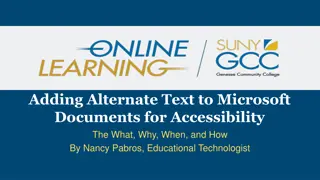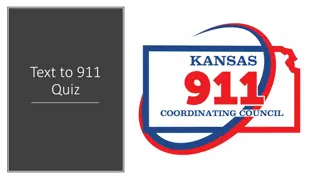Understanding Text Complexity in Science and Literacy Education
Exploring the concept of text complexity beyond the familiar realm of Oz, this presentation delves into quantitative and qualitative measures, reader and task considerations, and steps to assess text complexity. Various resources and examples are provided to help educators gauge and improve the complexity of scientific texts for better comprehension and analysis.
Download Presentation

Please find below an Image/Link to download the presentation.
The content on the website is provided AS IS for your information and personal use only. It may not be sold, licensed, or shared on other websites without obtaining consent from the author. Download presentation by click this link. If you encounter any issues during the download, it is possible that the publisher has removed the file from their server.
E N D
Presentation Transcript
Science & Literacy - Text Complexity Beyond the Land of Oz Dr. Kevin Anderson Sid Larson, Literacy Consultant CESA2
Text Complexity Staircase Reading Anchor Standard #10: Read and comprehend complex literary and informational texts independently and proficiently.
Recommended Placement Reader and Task 5
McDougal Littell 7th grade
Overview of Text Complexity Text complexity is defined by: 1. Quantitative measures readability and other scores of text complexity often best measured by computer software. 2. Qualitative measures levels of meaning, structure, language conventionality and clarity, and knowledge demands often best measured by an attentive human reader. 3. Reader and Task considerations background knowledge of reader, motivation, interests, and complexity generated by tasks assigned often best made by educators employing their professional judgment. Reader and Task Source: 9
Step 1: Quantitative Measures Measures such as: Word length Word frequency Word difficulty Sentence length Text length Text cohesion 10
Count the number of sentences= 8 Syllables=166 Count 100 words
Lexile Measure Example 980L Mean Sentence Length 13.60 Mean Log Word Frequency 3.33 Word Count 136
Reading Levels? So Lexile has this page matched to the 6-8 grade band of the CCSS. Fry places the page around 10th grade. Matching text to student strictly by a readabilty score is not an exact science. Convenience versus professional judgment.
Step 2: Qualitative Measures Measures such as: Levels of meaning Levels of purpose Structure Organization Language conventionality Language clarity Prior knowledge demands http://www.livebinders.com/play/play?id=813039# anchor 16
Lets Analyze the Qualitative Features of the Science Text!
Math Vocab Geograph y Vocab 2 Meanings
Notice the number of dependent clauses!
Text Structures Latitude affects temperature The key concept. Notice Check Your Reading at the very bottom of the page! Also the thesis of the page. Notice the 1st sentence although affects is used not effect . Cause & Effect Chron. Order Text structures - the way that authors organize information - help students focus attention on key concepts and relationships, anticipate what s to come, and monitor their comprehension as they Compare Contrast Process Problem/ Solution read. Definition or Description
Step 3: Reader and Task Considerations such as: Motivation Knowledge and experience Purpose for reading Complexity of task assigned regarding text Complexity of questions asked regarding text 23
Reader and Task Considerations Will the complexity of any before, during, and after reading tasks or the complexity of any questions asked about the text interfere with the reading experience? Reader and Task What supports do I need to provide so all of my students (even those who are struggling readers) can access the text? What aspects of the text will likely pose the most challenge for my students? What are natural areas of focus for this text? With what standards do my students need the most practice? 24
Reader &Task What purpose does the reader have? Answer questions at the end of section? Teacher discussion? Quiz? The author of this science text page assumes many things about the students who will read : Working knowledge of tier 2 math & geography vocab Complex grammatical structures The strategy of moving across 3 separate texts Background knowledge of geography including map reading skills Background knowledge of Earth s orbit
Analysis Little on this page would prevent a 7th grader from fluently reading the text word calling . However, the complexity of the text could prevent access to comprehension. I read it, but I don t get it may be the truthful response of students lacking scaffolds and strategies to unlock what this text says.
How has Complex Text been handled in the Disciplines? Expectation condition students are expected to comprehend such texts without instruction and scaffolding Dependence condition students are assigned to read such texts but do not need to reach satisfactory comprehension as they can depend on being told what they need to know Bypass condition students are not even assigned to read such texts and operate in a print free environment where virtually all they need to know will be delivered through telling, showing, and interactive or hands-on activities
Our Role as Mentors (A New Condition) The person in your room most skilled as a reader of science is YOU! In comparison, your students are apprentices. Mentoring condition students are mentored to comprehend such texts and are provided instruction and scaffolding
Frontloading Decisions How do you decide if your text will require frontloading? What is below the surface of the text, unstated but necessary for comprehension? What does the author assume the reader already knows? (Hidden Knowledge) vocabulary concepts text structure From a reader and task perspective, do you need to activate prior knowledge or do you need to build background knowledge? What do you want students to know and do?
Points of Entry Nov. 2013 Rigorous Reading, 2013 by Doug Fisher & Nancy Frey
Access Point One: Purpose and Modeling Access Point Two: Close and Scaffolded Reading Instruction Access Point Three: Collaborative Conversations Access Point Four: An Independent Reading Staircase Access Point Five: Demonstrating Understanding and Assessing Performance 1.31
Access Point #1: Purpose Tell students what they will be learning What they will do with what they learn How they will interact with others as they learn A number of studies have found that when the teacher states objectives and provides feedback, student learning increases.(Dean, Stone, Hubbell, & Pitlet, 2012) Students benefit from having a clearly established purpose for learning, which alerts them to what is expected and draws their attention to salient points of instruction.(Marzano, 2009)
Modeling for Access Model That Which is Difficult for Students Model Ways to Resolve Problems Structural Analysis: Looking Inside Words Context Clues: Looking Outside Words Using Resources: Looking Further Outside Words Model How You Interact With Texts(Annotations) Model Through Think-Alouds Model Through Interactive Shared readings
Access Point #2: Close and Scaffolded Reading Instruction This means asking students to work the text through text-dependent questions which require students to find the evidence of their answers in the text. As the teacher you use questions differently. They are not meant to interrogate the class to see who read the assignment and who did not. 3.1
Comprehension Processes Make connections Generate Questions Make inferences Monitor reading Synthesize Determine importance Create Mental Images Disciplinary Lens Literacy Practices
Access Point #3: Collaborative Conversations Is a critical linchpin in the process of assessing complex texts Supports student learning in the absence of the teacher Provides opportunities for students to apply skills and strategies Allows for authentic practice of academic language Collaborative Learning
Access Point #4: An Independent Reading Staircase
Building Collections of Appropriately Complex Texts in All Disciplines What is so complex about text complexity? http://www.livebinders.com/media/get/NDQ4Nzg 3Mg==
Access Point #5: Demonstrating Understanding and Assessing Performance Deeper comprehension is not the ultimate goal. What can students be asked to do with that deeper understanding? To KNOW AND Be able to DO!
In Conclusion Science literacy begins with each science teacher being aware of the unique demands of science text. Lessons need to be strategic and purposeful and involve the same reading, writing, speaking & listening that real scientists use.
In Conclusion Use the support available in your district such as a literacy coach. Contact your CESA for workshops and additional support. Contact Dr. Kevin Anderson kevin.anderson@dpi.gov Contact Sid Larson , Literacy Consultant sid.larson@cesa2.org
